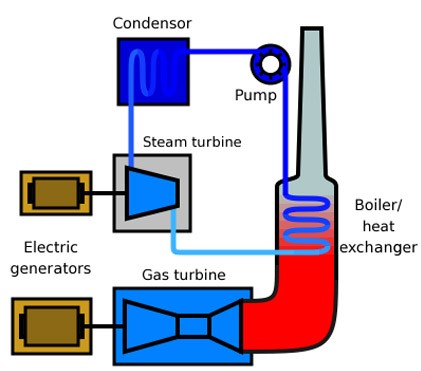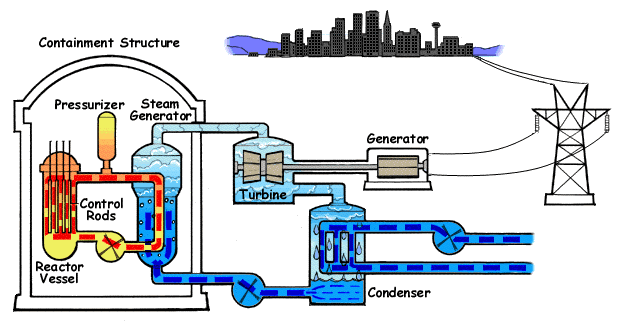Granted that I did not know much about how electricity was generated prior to blogging about the topic I feel as if the link below is a great resource and learning tool.
http://www.youtube.com/watch?v=20Vb6hlLQSg
The link provides you with a short five-minute video, broadly explaining how electricity is generated, and problems with generating electricity.
Throughout my blog I will write about how electricity is generated from different sources. Coal, natural gas, and nuclear power plants, are going to be the main topics throughout the body of my blog. Each topic will have a brief overview, that hopefully explains, how it works, which countries are highly dependent on that specific sector, flaws or problems with the sector, and the sectors projected future growth.
Coal
Coal initially mined by miners in states or countries that have an abundance of coal, which is a natural resource. The United States, and China being amongst the greatest producers. Within the U.S. states such as Wyoming, West Virginia, and Kentucky are amongst the greatest producers. As for how coal is transformed into electricity, I found a direct paragraph that summarizes the process.
“The coal is grinded to make it easier to deliver and burn as a fuel. Large fans blow the coal powder into a boiler that stands 20 stories high. The coal fuels a massive fireball that can reach 3,000 degrees Fahrenheit. Steam pipes in the boiler carry ultra pure water that has been pumped from a nearby cooling lake and treated. The heat of the furnace converts the water into steam. At a temperature of 1,005 degrees and a pressure of 2,400 pounds per square inch (PSI), the steam is sent over a turbine through a series of pipes. Low pressure, intermediate pressure and high-pressure steam are used to spin the blades of three turbines at a rate of 3,600 revolutions per minute.
The turbines, connected to a generator by a shaft, power the generator. The generator is made of a large magnet spinning inside copper windings. Electrons flow from the copper along a conductor to create 24,000 volts of electricity.
In order to push the electricity from the plant further out into the city, a step-up transformer is needed to increase the power from 24,000 volts to 345,000 volts to carry electricity over transmission lines to customers.”
These steps are obviously taken after the coal has been mined and transported to a plant.
Just incase you are too lazy to read and follow the process as stated above, below is a diagram provided by Exxon Mobile depicting the process in which coal is transformed into electricity. According to treehugger.com, China, U.S., and India are the countries that consume the largest amount of coal.
The problem with coal as discussed in prior classes is the amount of CO2 released into the atmosphere.
Surprising coals consumption is projected to slow down in growing countries such as China and India.
Natural Gas
Is a versatile fossil fuel, meaning it can be used for various different things, such as cooking, electricity, etc.… Some of the advantages are that natural gas burns cleanlier than coal and oil. However, natural gas is still a fossil fuel, which contributes to global warming.
As to how it works the link below is extremely informative on the process. The link includes flaws, strengths, and future possibilities for natural gas.
“The fastest growing use of natural gas today is for the generation of electric power”. Natural gas is used in a plant, in order to provide heat/energy those later powers steam turbines, which provides consumers with electricity.
“Because energy produced from natural gas has much lower associated carbon emissions than these other fossil fuels, natural gas could act as a “bridge” fuel to a low-carbon energy future. Particularly in the electric sector, natural gas has the potential to ease our transition to renewable energy”.
Some the flaws regarding natural gas are the possibility that extracting natural gas may lead to earthquakes. Although, not proven I believe the mini earthquakes caused by hydraulic fracturing, leads to larger earthquakes. Not to mention that although is less harmful to the environment it is still a short-term solution.
The U.S., Russia, and European Union are the three largest consumers of natural gas.
Nuclear Power Plant
The diagram above displays the process of how nuclear power plants actually work. In reality all three plants (Nuclear, coal, natural gas) work very similarly. Commonality being, heat is needed in order to turn turbines that produce energy.
The flaw with nuclear power plants is the danger of a disaster. When things go wrong they go terribly wrong.
“On one hand, atomic energy offers a clean energy alternative that frees us from the shackles of fossil fuel dependence. On the other, it summons images of disaster: quake-ruptured Japanese power plants belching radioactive steam, the dead zone surrounding Chernobyl’s concrete sarcophagus”.
This quote does a great job describing how dangerous nuclear power plants are. In our recent memory there are images of the devastation left behind by not only the tsunami but also the nuclear power plant in Japan.
Fukushima Daiichi nuclear disaster
http://www.pbs.org/wgbh/pages/frontline/japans-nuclear-meltdown/
The video provided in the link although lengthy is a great short documentary. It really helps you visualize the horror possible with nuclear power plants.
Advantages of Nuclear Energy
1) Lower Greenhouse Gas Emission
2) Powerful and Efficient
3) Reliable
4) Cheap Electricity
5) Low Fuel Cost
6) Continuous Supply
Countries that produce the most amount of electricity from nuclear power plants are as follows:
1) U.S.
2) France
3) Japan
4) Russia
Conclusion
It is fair to say that each individual plant has both pro’s and con’s. As future contributors to society, it is our duty to be well informed on the matter.
References:
http://www.cpsenergy.com/Services/Generate_Deliver_Energy/Coal/coal_generation.asp
http://www.catf.us/fossil/problems/co2/
http://www.conserve-energy-future.com/Advantages_NuclearEnergy.php



According to the EIA numbers, between 2004 and 2008, total world consumption of coal went from 6,259,645,000 to 7,238,208,000 short tons.
Thanks and regards,
Keith Oberbrunner